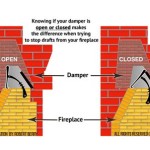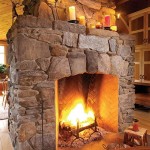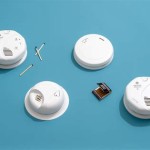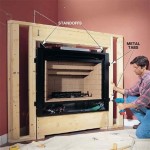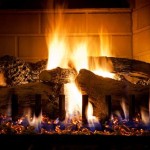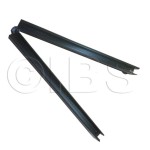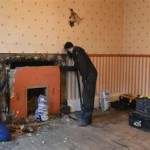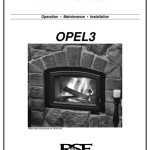Fireplace Mantels With Corbels: A Classic Design Element
Fireplace mantels serve as a focal point in living spaces, lending character and architectural interest to a room. Among the vast selection of mantel designs, those featuring corbels stand out for their blend of structural integrity and decorative appeal. Corbels are projecting architectural elements, historically used to support an overhanging structure but now often employed for purely aesthetic purposes. When incorporated into fireplace mantels, they add a touch of elegance and historical depth, transforming a simple fireplace into a statement piece.
This article will explore the various aspects of fireplace mantels with corbels, focusing on their design features, material options, historical significance, and installation considerations. Understanding these aspects will provide homeowners and designers with a comprehensive overview of how to effectively utilize this design element in their own projects.
Design and Style Considerations
The design of a fireplace mantel with corbels is multifaceted, encompassing the style of the corbels themselves, the overall mantel shape, and the interplay of materials. The style of the corbels available is varied. Simplified, geometric corbels offer a modern aesthetic, whereas more ornate, carved corbels align with a traditional or Victorian design. A homeowner must consider the architectural style of their home when selecting complementary corbels for the fireplace mantel. Mismatched styles can result in a disjointed and less appealing outcome.
Mantel shapes also contribute significantly to the overall design. A simple, straight mantel shelf, paired with prominent corbels, offers a clean and balanced look. Conversely, a more elaborate mantel shelf with curved edges or intricate molding can be coupled with simpler corbels to avoid overwhelming the space. The choice depends on creating a desired visual balance between the mantel itself and the supporting corbels.
Material selection is another crucial aspect of the design process. Wood is a popular choice, offering warmth and versatility in terms of stain and paint finishes. Stone, such as marble or limestone, provides a more formal and stately appearance. Metal corbels, often crafted from wrought iron, add a touch of industrial chic or rustic charm. The chosen material should complement the fireplace surround and the overall room décor.
The size and placement of the corbels need careful consideration. Overly large corbels can appear disproportionate and dominate the mantel, while corbels that are too small may seem insignificant and provide inadequate visual support. The spacing between corbels is also important. They should be spaced evenly and in a manner that visually balances the weight of the mantel shelf. Often the center of the mantel piece needs a center corbel or decoration to balance the piece visually.
Material Options and Their Characteristics
The selection of materials for both the mantel and the corbels significantly impacts the overall aesthetic and durability of the fireplace. Wood, stone, and metal are the most common options, each offering distinct advantages and disadvantages.
Wood offers exceptional versatility. It can be easily carved, stained, or painted to match any décor. Hardwoods like oak and maple are durable and resistant to wear, while softwoods like pine are more affordable but require more careful handling. The choice of wood species affects the cost and the final appearance of the mantel. Wooden corbels are typically carved separately and then attached to the mantel shelf, allowing for intricate detailing and customization.
Stone, such as marble, granite, and limestone, provides a luxurious and timeless appeal. Stone mantels are highly durable and resistant to heat, making them a practical choice for fireplaces. However, stone is heavier than wood, requiring a more robust support structure. Stone corbels are often integrated into the mantel as a single piece, creating a seamless and elegant look. The veining and color variations in natural stone add unique character to each mantel.
Metal corbels, typically made from wrought iron or steel, offer a rustic or industrial aesthetic. Metal is exceptionally strong and durable, making it suitable for supporting heavier mantels. Metal corbels can be forged into various shapes and designs, from simple scrolls to intricate patterns. They can be painted, powder-coated, or left with a natural finish to complement the surrounding décor. Metal corbels are particularly well-suited for fireplaces with a modern or industrial design.
Composite materials, such as MDF (Medium-Density Fiberboard) and faux stone, offer cost-effective alternatives to natural materials. MDF can be easily shaped and painted to mimic the look of wood, while faux stone provides the appearance of natural stone at a fraction of the cost. These materials are often lighter and easier to install than their natural counterparts.
Historical Significance and Architectural Context
Corbels have a rich history, dating back to ancient times. They were initially used as structural elements to support overhanging walls, arches, and balconies. Examples of corbels can be found in ancient Egyptian, Greek, and Roman architecture. Over time, corbels evolved from purely functional elements to decorative features, adding visual interest and architectural detail to buildings.
In medieval architecture, corbels were commonly used to support the weight of arches and vaults in cathedrals and castles. These corbels were often elaborately carved with religious symbols or heraldic crests. During the Renaissance, corbels became more ornate and decorative, featuring intricate carvings of foliage, animals, and human figures. These corbels were often used to support balconies, cornices, and other architectural features.
In the 18th and 19th centuries, corbels were widely used in Victorian and Edwardian architecture, adding a touch of elegance and grandeur to homes. Victorian corbels were often highly decorative, featuring intricate carvings of floral motifs, scrolls, and other ornamental details. These corbels were commonly used to support fireplace mantels, adding a focal point to living rooms and parlors.
Today, corbels are still used in contemporary architecture, both for structural and decorative purposes. They can be found in a variety of styles, from simple and minimalist designs to ornate and traditional patterns. Corbels are often used to add visual interest and architectural detail to buildings, creating a sense of depth and dimension. When used in fireplace mantels, they evoke a sense of history and craftsmanship, adding character and charm to a room.
Understanding the historical context of corbels can inform design choices, allowing homeowners to select corbels that are appropriate for the style of their home. For example, a Victorian home might benefit from ornate, carved corbels, while a modern home might be better suited to simpler, geometric corbels.
Installation Considerations and Best Practices
Proper installation of a fireplace mantel with corbels is crucial for both aesthetic appeal and functional safety. The installation process depends on the type of mantel, the weight of the materials, and the construction of the fireplace. It is recommended to consult with a professional contractor or experienced installer to ensure that the mantel is installed correctly and safely.
Before installation, it is important to prepare the fireplace surround. Ensure that the surface is clean, level, and free from any debris. If the fireplace surround is uneven, it may be necessary to shim the mantel to ensure that it is level. Measure and mark the location of the mantel and the corbels, using a level to ensure that they are aligned properly.
For wooden mantels, the corbels are typically attached to the mantel shelf using screws, nails, or adhesive. It is important to use appropriate fasteners that are strong enough to support the weight of the mantel and any items that are placed on it. For heavier mantels, it may be necessary to use additional support brackets or anchors to secure the mantel to the wall.
Stone mantels are typically heavier than wooden mantels and require a more robust support structure. Stone mantels are often installed using mortar or epoxy adhesive to secure them to the fireplace surround. It is important to use a suitable adhesive that is designed for use with stone and that can withstand the high temperatures of a fireplace.
Metal corbels are typically attached to the mantel shelf and the fireplace surround using screws, bolts, or welds. It is important to use appropriate fasteners that are strong enough to support the weight of the mantel and any items that are placed on it. For heavier metal mantels, it may be necessary to use additional support brackets or anchors to secure the mantel to the wall.
When installing a fireplace mantel with corbels, it is important to follow all building codes and safety regulations. Ensure that the mantel is installed at a safe distance from the firebox and that it is made from fire-resistant materials. It is also important to inspect the mantel regularly for any signs of damage or wear.
Installing a fireplace mantel with corbels can be a rewarding project that adds character and charm to a home. By following these installation guidelines and best practices, homeowners can ensure that their fireplace mantel is installed correctly and safely, providing years of enjoyment.
Maintenance and Care
Proper maintenance ensures the longevity and beauty of a fireplace mantel with corbels. The specific care required depends on the materials used in the mantel and corbels. Regular cleaning and periodic inspections are essential for preventing damage and preserving the appearance of the mantel.
For wood mantels, dusting regularly with a soft cloth or microfiber duster helps prevent the buildup of dust and grime. Wood polishes or cleaners specifically designed for wood furniture can be used to maintain the luster and protect the finish. Avoid using harsh chemicals or abrasive cleaners, as these can damage the wood surface. Periodically, inspect the mantel for signs of cracking, warping, or insect infestation. Address any issues promptly to prevent further damage.
Stone mantels require gentle cleaning with a soft cloth and mild soap. Avoid using acidic or abrasive cleaners, as these can etch or scratch the stone surface. For stubborn stains, use a stone cleaner specifically formulated for the type of stone used in the mantel. Regularly inspect the mantel for cracks or chips. Repair any damage promptly to prevent further deterioration.
Metal corbels can be cleaned with a damp cloth and mild soap. For rust or corrosion, use a metal cleaner specifically designed for the type of metal used in the corbels. Avoid using abrasive cleaners, as these can scratch the metal surface. Periodically, inspect the corbels for signs of damage or wear, such as loose screws or welds. Tighten any loose fasteners and repair any damage to maintain the structural integrity of the corbels.
Regardless of the material, it is important to protect the fireplace mantel from excessive heat and moisture. Avoid placing flammable items directly on the mantel, and ensure that the fireplace is properly ventilated. If the fireplace is not in use, consider covering the mantel with a protective cloth to prevent dust and damage.
By following these maintenance and care guidelines, homeowners can preserve the beauty and functionality of their fireplace mantel with corbels for years to come. Regular care not only enhances the appearance of the mantel but also contributes to the overall ambiance and value of the home.

French Country Mantle With Corbels Corbles Arch

Custom Fireplace Mantel With Corbels Floating Rustic

Rustic Curved Corbel Oak Beam Mantel Shelf Fire Surrounds

Mantel Corbels K2 Stone

Multi Level Mantel With Huge Corbels Farmhouse Furniture

Custom Built Mantel Shelf With Large Corbels Home Beautiful Fireplace Decor Stone Rustic Mantels

Mantel Corbel Photos Ideas Houzz

Rustic Fireplace Mantel With Corbels Antique Washers And

Saint Birch White 72 Fireplace Mantel With Corbels Com

Rustic Timberwood Fireplace Shelf Corbels

